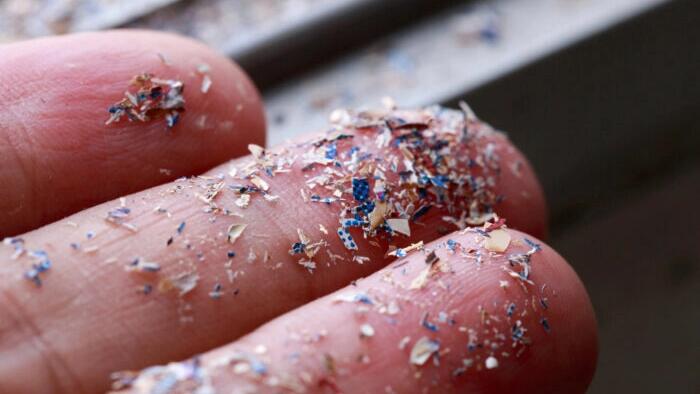Harmful microplastics aren’t only detectable in lungs, bloodstreams, and placenta—they can be found in human testicles, as well, according to a study published in the journal Toxicological Sciences.
The research, led by the University of New Mexico, found microplastics in the testicular tissue of both dogs and humans. The team discovered an average of 122.63 micrograms of microplastics per gram of tissue in canines, and a whopping 329.44 micrograms per gram in humans.
The most common plastic polymer found in both species was polyethylene, the stuff used to make plastic bags and bottles. It’s like the plastic equivalent of a cockroach – it’s everywhere, and it’s hard to get rid of. The study also noted a correlation between the presence of PVC (polyvinyl chloride) and lower sperm count in dogs. Although this finding couldn’t be directly replicated in humans due to the way the human samples were stored, it’s a canary in the coal mine – a warning sign of potential problems.
The researchers compared these findings to previous studies that have linked microplastics to severe inflammatory responses and digestive system issues.
It’s a stark reminder that our love affair with plastic might be having some unintended consequences.
🇺🇸MICROPLASTICS FOUND IN HUMAN TESTICLES
— Mario Nawfal (@MarioNawfal) May 21, 2024
Researchers found microplastics in all 23 human testicles and 47 dog testicles tested.
Human testicles had 330 micrograms of plastic per gram of tissue, almost three times higher than dogs. Polyethylene and PVC were the most common… pic.twitter.com/uv4BLboy0b
Abstract from Study
The ubiquitous existence of microplastics and nanoplastics raises concerns about their potential impact on the human reproductive system. Limited data exists on microplastics within the human reproductive system and their potential consequences on sperm quality. Our objectives were to quantify and characterize the prevalence and composition of microplastics within both canine and human testes and investigate potential associations with the sperm count, and weights of testis and epididymis. Using advanced sensitive Pyrolysis-Gas Chromatography/Mass Spectrometry (Py-GC/MS), we quantified 12 types of microplastics within 47 canine and 23 human testes. Data on reproductive organ weights, and sperm count in dogs were collected. Statistical analyses, including descriptive analysis, correlational analysis, and multivariate linear regression analyses were applied to investigate the association of microplastics with reproductive functions. Our study revealed the presence of microplastics in all canine and human testes, with significant inter-individual variability. Mean total microplastic levels were 122.63 µg/g in dogs and 328.44 µg/g in humans. Both humans and canines exhibit relatively similar proportions of the major polymer types, with PE being dominant. Furthermore, a negative correlation between specific polymers such as PVC and PET and the normalized weight of the testis was observed. These findings highlight the pervasive presence of microplastics in the male reproductive system in both canine and human testes, with potential consequences on male fertility.
